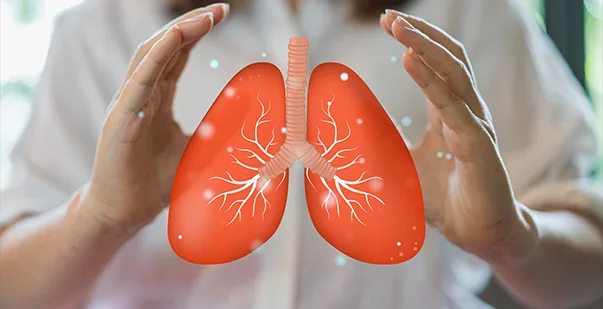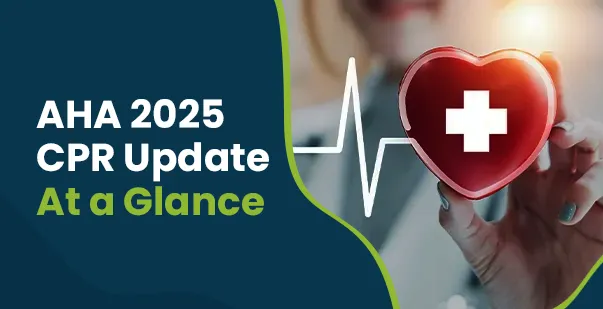Did you know that an excess of carbon dioxide in your bloodstream could leave you feeling breathless and fatigued? This may signal hypercarbia, also known as hypercapnia. Hypercarbia happens when there is excessive carbon dioxide in the bloodstream. It is a waste product that our body gets rid of when trying to breathe. When the lungs cannot remove enough carbon dioxide, it starts to build up and leads to hypercarbia. This can occur due to various reasons, such as asthma and lung diseases.
The symptoms of hypercarbia vary depending on its severity. Mild cases cause dizziness, headaches, or shortness of breath. As it worsens, symptoms such as confusion, rapid breathing, and unconsciousness may appear. Read this blog to stay vigilant and prevent serious complications.
What is Hypercarbia?
Hypercarbia or hypercapnia is a condition where carbon dioxide (CO2) builds up in the bloodstream. It occurs when the body is unable to properly release CO2 through normal breathing. This causes an imbalance between oxygen and carbon dioxide levels. This can happen due to respiratory issues, such as lung diseases or conditions that affect breathing, like sleep apnea.
What Are The Causes of Hypercapnia?
So what is the hypercarbia definition? Hypercarbia occurs when there is excessive carbon dioxide in blood, disrupting the balance of gasses in the blood. It often happens because the lungs are not able to efficiently remove CO2, which can result from various health conditions or breathing difficulties. People with chronic lung diseases, weakened respiratory muscles, or issues that affect their breathing rate are at higher risk.
- Chronic Obstructive Pulmonary Disease (COPD)
COPD is a long-term lung condition that includes diseases like emphysema and chronic bronchitis. In COPD, the airways become narrowed and damaged, making it harder to exhale fully. This traps CO2 in the lungs, preventing its proper elimination. Over time, this buildup of CO2 leads to hypercapnia.
- Obstructive Sleep Apnea (OSA)
In obstructive sleep apnea, the airway collapses or becomes blocked during sleep, causing breathing interruptions. These pauses reduce the ability to exhale CO2 effectively. As CO2 accumulates during these episodes, it can lead to hypercapnia, especially in severe cases. Treatment like CPAP therapy helps keep the airway open to prevent this.
- Respiratory muscle weakness
Conditions like muscular dystrophy or ALS can weaken the muscles responsible for breathing. When these muscles are too weak, it becomes difficult to inhale and exhale properly. This limits the removal of CO2, causing it to build up in the bloodstream, leading to hypercapnia over time.
- Sedative Overdose
Drugs such as opioids or benzodiazepines can slow down the breathing rate. This slower respiration means less CO2 is exhaled, causing it to accumulate in the blood. In cases of overdose, this can quickly lead to dangerous levels of hypercapnia and requires immediate medical attention.
- Severe asthma attacks
During a severe asthma attack, the airways become inflamed and constricted, making it difficult to breathe out. This airway obstruction can cause CO2 to be trapped in the lungs. If not treated promptly, it can lead to hypercapnia, especially in prolonged or repeated asthma attacks.
Training You Can Trust for Real Emergencies
Enroll in BLS Training
What Are The Common Hypercarbia Symptoms?
Hypercapnia occurs when too much carbon dioxide builds up in the blood. The symptoms vary depending on the severity of the conditions. The symptoms might not be noticeable, but they worsen over time. Here are a few signs that may indicate hypercapnia:
- Headache
A common early symptom of hypercapnia is a persistent headache. This occurs because excess carbon dioxide (CO2) in the bloodstream can cause blood vessels in the brain to dilate, leading to increased pressure and discomfort. The headache may worsen as CO2 levels continue to rise, potentially accompanied by other symptoms such as confusion or drowsiness
- Dizziness
High CO2 levels can make you feel lightheaded or dizzy. This is because the brain isn’t receiving enough oxygen due to improper gas exchange in the lungs. If dizziness persists, it could indicate worsening hypercapnia and require medical attention.
- Shortness of breath
As CO2 levels increase, it can lead to difficulty breathing and a sensation of not getting enough air, even with deep breaths. This is a key symptom and one of the most noticeable signs of hypercapnia
- Confusion
When the brain doesn’t get enough oxygen, it can lead to confusion or difficulty concentrating. You might feel disoriented or have trouble thinking clearly. This can be a serious sign, especially if it progresses to drowsiness or lethargy.
- Rapid Breathing
The body tries to compensate for high CO2 levels by speeding up breathing. This rapid, shallow breathing is the body’s way of trying to expel more CO2. However, if this symptom appears, it’s a sign that medical help is needed quickly.
How To Treat Hypercarbia?
Depending on the severity, treatments range from simple breathing support to more intensive therapies. You must get medical care to reduce complications and restore the normal levels of carbon dioxide. Here are some common treatments used:
- Oxygen Therapy
Oxygen therapy helps increase oxygen levels in the blood and supports proper breathing. It’s often used in mild to moderate cases of hypercapnia to relieve symptoms. A mask or nasal tubes are used to deliver oxygen to the patient.
- Non-Invasive Ventilation (NIV)
NIV, such as CPAP or BiPAP machines, assists in breathing without the need for intubation. It delivers air or a mixture of gasses to the lungs through a mask or nasal device. This helps in reducing the buildup of carbon dioxide and improves oxygenation. NIV is often used for patients suffering from COPD or sleep apnea, where it is difficult to breathe properly. It helps the lungs to perform properly and can also prevent hypercapnia.
- Ventilator Support
In severe cases, a mechanical ventilator may be necessary to help the patient breathe. The ventilator controls breathing to ensure proper gas exchange and the removal of excess CO2. This is usually done in an ICU setting and is closely monitored by healthcare professionals.
- Treating Underlying Condition
Managing the condition causing hypercapnia is key to long-term treatment. This could involve treating infections, improving lung function, or adjusting medications. Once the underlying issue is addressed, CO2 levels can return to normal, preventing future episodes of hypercapnia.
Read more: 9 Basic Life-Saving Skills That Will Help You Save A Life
What Are The Risk Factors for this Condition?
Hypercapnia can develop due to several factors that affect your ability to breathe effectively. Here are the risk factors to recognize to prevent adverse conditions.
Chronic lung diseases
Conditions like COPD, asthma or bronchitis make it harder for the lungs to function properly, leading to CO2 buildup. People with these diseases are more prone to hypercapnia due to the reduced ability to exhale fully.
Obesity
Being overweight, especially having obesity hypoventilation syndrome (OHS), can affect the muscles involved in breathing. This can lead to shallow breathing, causing CO2 to accumulate in the body.
Sleep Apnea
Sleep apnea causes repeated pauses in breathing during sleep, which limits the amount of CO2 that is exhaled. Over time, these interruptions can result in hypercapnia, especially if left untreated.
Neuromuscular Disorders
Conditions like muscular dystrophy or amyotrophic lateral sclerosis (ALS) weaken the muscles needed for breathing. When the respiratory muscles are too weak to function properly, it leads to CO2 retention and hypercapnia.
Sedative Use
Medications such as opioids or sedatives can slow down breathing, causing CO2 to build up. People who regularly take these medications, especially in high doses, are at greater risk of developing hypercapnia.
What Are The Complications of Hypercarbia?
If the treatments go untreated, hypercapnia can cause several complications that affect several parts of the body. The buildup of carbon dioxide reduces normal breathing but also impacts the heart, brain,al and other organs. Here are some complications of hypercapnia:
- Respiratory Failure
If CO2 levels continue to rise, the lungs may no longer function properly, leading to respiratory failure. This condition requires immediate medical intervention, often involving ventilator support to restore normal breathing.
- Acidosis
Hypercapnia can cause the blood to become too acidic, a condition known as respiratory acidosis. This disrupts the body’s pH balance and can lead to serious organ damage if not corrected quickly.
- Coma
In severe cases, high CO2 levels can cause confusion and drowsiness and eventually lead to a coma. This occurs when the brain doesn’t get enough oxygen, and immediate medical treatment is needed to reverse the effects.
- Organ Damage
Prolonged hypercapnia can affect the function of vital organs, including the heart and kidneys. Reduced oxygen supply and increased acidity in the blood can impair these organs, leading to long-term damage.
- Cardiac Arrest
If hypercapnia becomes critical, it can cause the heart to stop functioning properly, leading to cardiac arrest. This is a life-threatening complication and requires emergency resuscitation to restore heart function. Cardiopulmonary resuscitation helps save lives when someone experiences a sudden cardiac arrest.
Build strong and certified skills
Get certified in Basic Life Support (BLS) with our flexible online course.
What Tests are Used to Diagnose Hypercarbia?
Doctors use several tests to measure carbon dioxide levels and detect the functioning of the lungs. Here are some common tests that might help in diagnosing hypercapnia.
Arterial Blood Gas (ABG) Test
This is the most accurate test for diagnosing hypercapnia. It measures the levels of oxygen and carbon dioxide in your blood, giving doctors a clear picture of your lung function. A small sample of blood is taken from an artery, typically in the wrist, for this test.
Pulse Oximetry
A pulse oximeter is a small device placed on your finger that measures your oxygen levels. While it doesn’t directly measure CO2, it can indicate if your oxygen levels are low, which can be a sign of respiratory problems linked to hypercapnia.
Pulmonary Function Tests (PFTs)
PFTs are tests to assess the functioning of your lungs. They assess lung capacity and airflow, which can help identify conditions like COPD or asthma that may be causing hypercapnia.
Chest X-ray or CT scan
Imaging tests like X-rays or CT scans can help doctors see the structure of your lungs and identify any abnormalities or blockages. These tests can reveal issues such as lung damage or infections that may be contributing to CO2 buildup.
Electrolytes and Metabolic Panels
Blood tests that check your electrolyte levels and overall metabolic function can also be helpful. They can detect imbalances caused by respiratory acidosis or other complications of hypercapnia.
Read more: What Does CPR Stand For And How To Perform It?
Can You Prevent Hypercarbia?
The best way to prevent hypercapnia is to follow the instructions of your medical practitioner. If you have COPD, talk to your doctor and seek ways to manage exacerbations (flare-ups).
When Should I Visit the Doctor?
You must go to the nearest emergency room if you experience the following:
- Seizures
- Disorientation
- Altered mental state
- Blue skin, lips, or nails
- Paranoia
Take Control of Your Respiratory Health Today!
Our bodies balance themselves all the time, without us thinking about it. Carbon dioxide and oxygen levels can go up and down. However, certain conditions can make it harder for our bodies to balance as required. This may lead to hypercapnia or hypercarbia.
The excess carbon dioxide in hypercapnia can be harmful and may cause death, if not treated early. If you have a condition that puts you at risk for hypercapnia, make a plan with your provider and discuss things you must do if the symptoms persist. Visit a doctor if you experience mental changes like confusion, disorientation, or seizures.
Prepare to handle critical respiratory emergencies like hypercarbia with confidence. Get ACLS certified online today and strengthen your life-saving skills!









